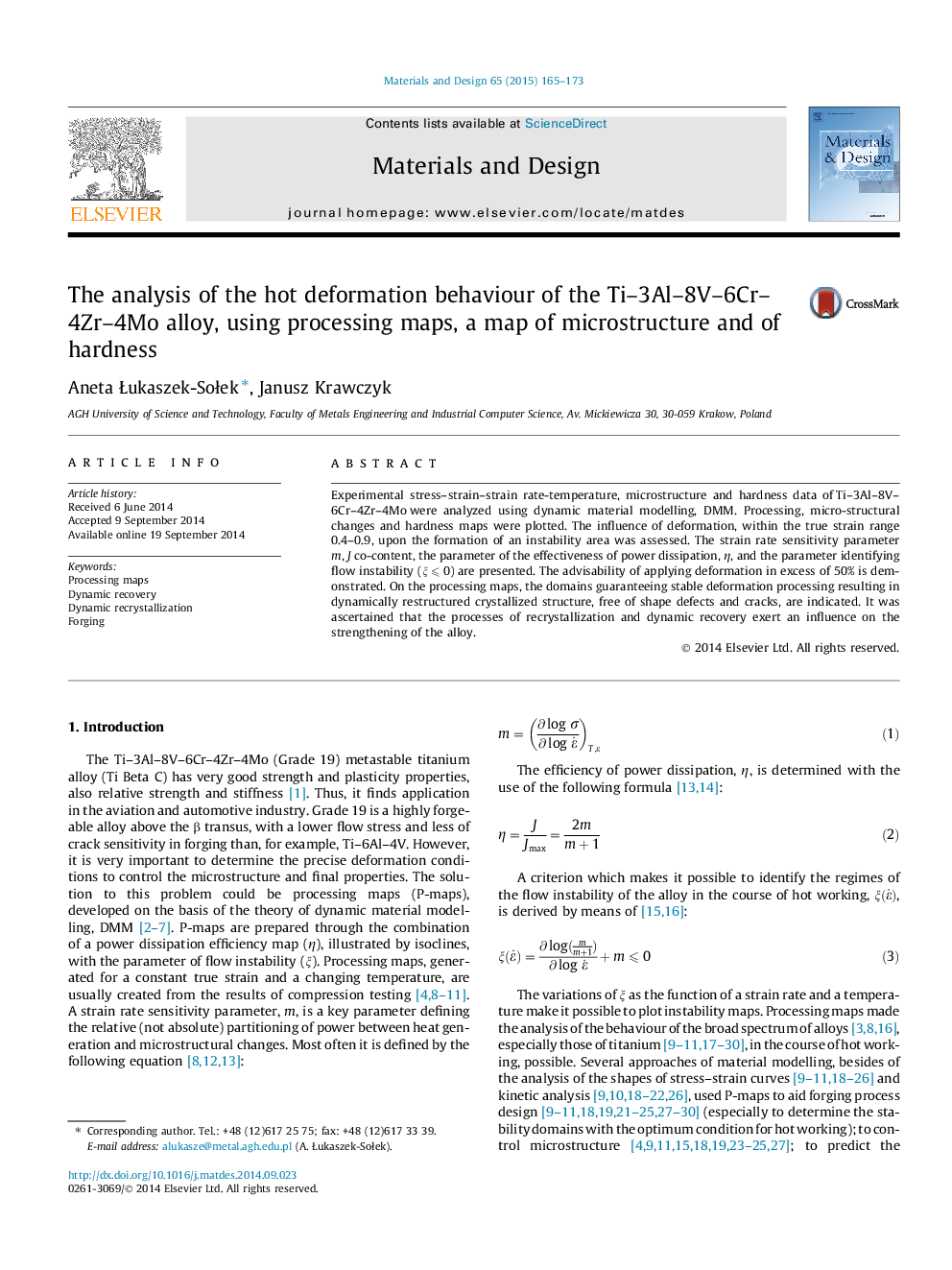| Article ID | Journal | Published Year | Pages | File Type |
|---|---|---|---|---|
| 828794 | Materials & Design (1980-2015) | 2015 | 9 Pages |
•P-maps of Grade 19 alloy were plotted for ε = 0.4–0.9 and varying temperatures.•Micro-structural changes and hardness maps were plotted for ε = 0.9.•The domains guaranteeing stable deformations are indicated.•The ξ parameter proved that the degree of deformation should be higher than 50%.•A high level of the sensitivity of Grade 19 alloy to strain rate was shown.
Experimental stress–strain–strain rate-temperature, microstructure and hardness data of Ti–3Al–8V–6Cr–4Zr–4Mo were analyzed using dynamic material modelling, DMM. Processing, micro-structural changes and hardness maps were plotted. The influence of deformation, within the true strain range 0.4–0.9, upon the formation of an instability area was assessed. The strain rate sensitivity parameter m, J co-content, the parameter of the effectiveness of power dissipation, η, and the parameter identifying flow instability (ξ ⩽ 0) are presented. The advisability of applying deformation in excess of 50% is demonstrated. On the processing maps, the domains guaranteeing stable deformation processing resulting in dynamically restructured crystallized structure, free of shape defects and cracks, are indicated. It was ascertained that the processes of recrystallization and dynamic recovery exert an influence on the strengthening of the alloy.
